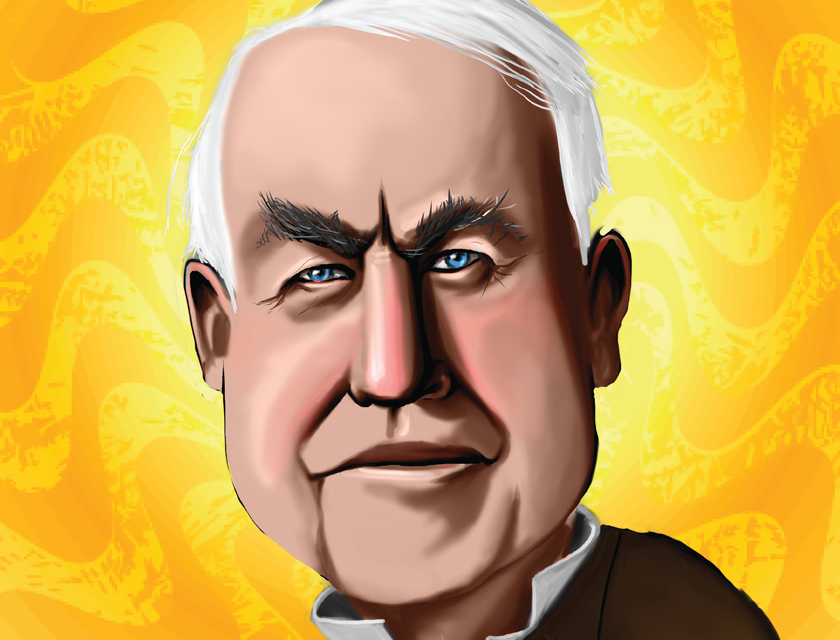Perhaps the best-known inventor of all time, Thomas Edison was also charismatic and fun. He might even joke, 175 years after his birth, that he was a news butcher long before the mainstream media came along.
That was Edison’s first job—selling newspapers, candy, vegetables, and cigars on trains to passengers en route from Port Huron, Michigan, to Detroit.
He was 12 and, by many accounts, nearly deaf. His school education had lasted but a few months; his mother taught him reading, writing, and arithmetic. His hunger for knowledge had resulted in his setting up a laboratory in his parents’ basement at age 10.
That humble first job foreshadowed the greatness that beckoned, and set the tone for his life.
Edison was making a $50-a-week net profit by age 13—significant money at the time—and used it to buy equipment for his electrical and chemical experiments. He was still working for the railroad when he changed the outcome of his life and another’s: He saved a 3-year-old boy from being hit by a train.
Jimmie MacKenzie’s father, a station agent, was so grateful that he trained Edison to be a telegraph operator. This real-life education and young Edison’s entrepreneurial acumen eventually resulted in his setting in type, printing, and selling the two-page Grand Trunk Herald with some assistants.
Edison had more in common with today’s inventing influencers than one might think (including being the subject of several Instagram accounts). Contrary to stories and pictures that leave the impression of a solitary genius, he was a savvy CEO type who surrounded himself with talented people.
The Herald success led to his forming at least a dozen companies, including the Edison General Electric Co. in 1890. It merged into the iconic General Electric Co. in 1896.
Edison’s famous invention of the first practical incandescent light bulb—again, with the aid of assistants—was patented in 1879. Other inventions prominent among his 1,093 U.S. patents include the phonograph (his lifelong favorite), movie camera and alkaline storage battery.
He also made significant improvements to the telegraph and telephone, underscoring his historic contributions as not just an inventor but as an innovator. In fact, author Patrick J. Kiger recently wrote: “Edison’s genius was improving on others’ technologies and making them more practical for the general public.”
This is summed up in one of Edison’s most succinct quotes: “There is a better way to do it. Find it.”
He was obsessed with promoting knowledge in all forms and numbers. Edison created the world’s first industrial research laboratory, which became the model for other corporate research labs—including T.J. Watson, Xerox Parc, and Bell Telephone Labs.
His relentless work ethic precluded dwelling on his early obstacles; in fact, he said his hearing problems helped him concentrate better, adding to his legendary perseverance.
Edison’s death in 1931 at age 84 was mourned worldwide. In fact, according to the Henry Ford Museum in Dearborn, Michigan, Edison’s good friend Henry Ford asked Edison’s son, Charles, to capture his father’s last breath in one of eight test tubes very near Thomas Edison’s bed. He complied and sent one to the automaker.
This year marks the 10th anniversary of the USPTO trading cards. Requests for the cards can be sent to [email protected]. You can also visit them at uspto.gov/kids.


